
Resort Life
Lodging From the 19th – 20th Century
The original settlers of the Grand Haven Area were quick to notice the great opportunity for the lumber business. Rev. William Ferry, along with Rix Robinson and Ferry’s his brother-in-law Nathan White, established the Grand Haven Company. Quick access to water transportation and acres of woodland led to dozens of sawmills on the Grand River. Subsequently, with the growth of business came the growth of the population, including visitors. And thus, the early need for temporary lodging sowed the seeds for the vacation rentals we know today.
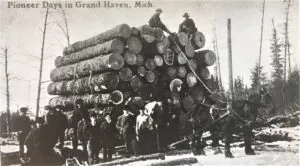
Boarding Houses & Hotels
A boarding house was like running a hotel out of your house. People rented rooms and most often the managers provided meals. Most often travelers and temporary residents, like some of the workers at the sawmills, were the usual tenants. This led to Jabez Barber constructing the first boarding house in Spring Lake in1841, primarily for workers. Years later, Henry Middlemist, the manager, bought the Barber House, and renamed it MiddleMist Hotel. It was quite common for hotels and similar businesses to change owners and names.
Two other notable establishments are the Cutler House and the Highland Park Hotel. As a luxurious five-story hotel, the Cutler House included the newest amenities and rooms for up to 300 people. These latest comforts included hot and cold running water, gas lights, and steam power. It held its grand opening on July 4, 1872. However, it unfortunately burned down in 1889, and the less-grand New Cutler House replaced it.
The Highland Park Hotel had its grand opening on July 4, 1890, complete with fireworks. Although it only had 36 rooms, it quickly became a favourite destination for tourists. Located on a bluff that looks over Lake Michigan, the Highland Park Hotel was an elegant and grand place. Eventually, as the property changed owners, they added more rooms to take in more guests. Likewise, most of the hotel burned down in December 1967. The owner at the time, Mell Wright, turned the left-over portion into a bed and breakfast. At the present time, the property is private residences.
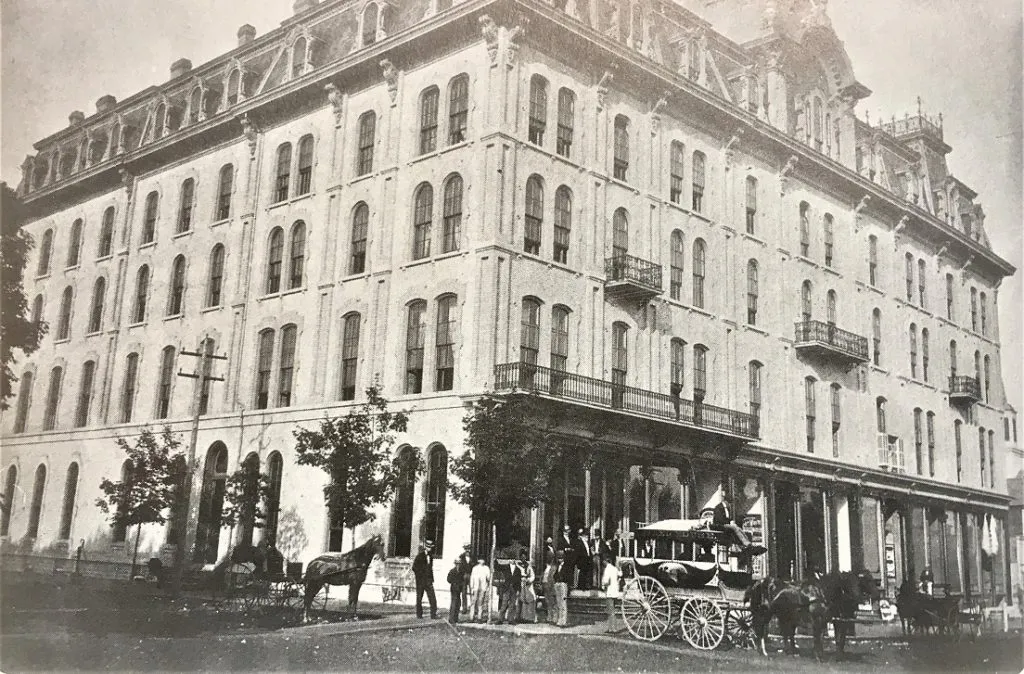
The Cutler House was a extravagant five-story hotel that opened on July 4, 1872.
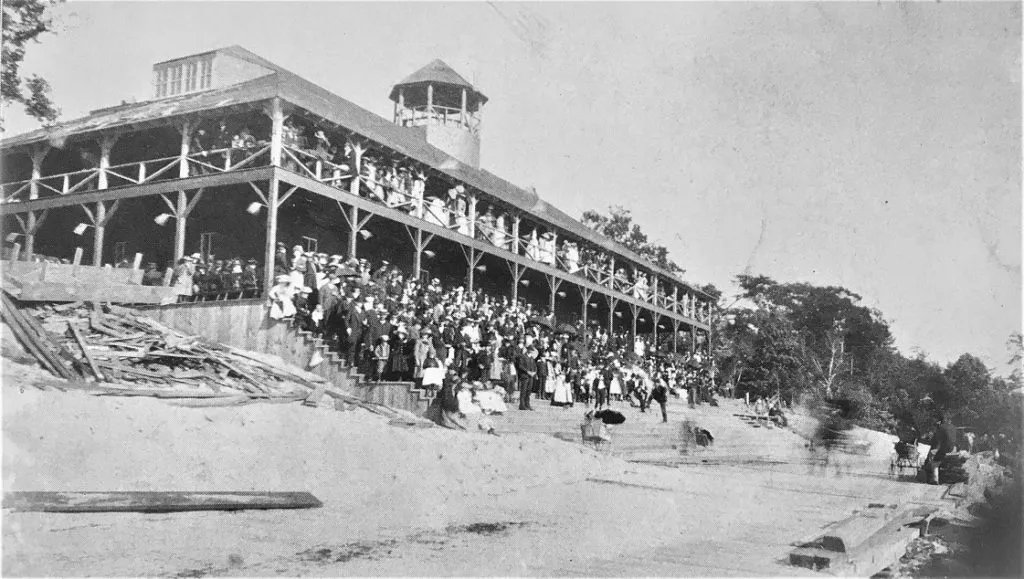
The Highland Park Hotel quickly became a popular tourist destination after it opened on July 4, 1890.
Cottages & Resorts
The Highland Park Association continued their work beyond the hotel by planning out a community of cottages in the surrounding area. The first cottage built was the Loch Hame (Gaelic for ‘lake home’) in 1887 by Sarah Saunders. Across the street was the Khardomah Lodge. Built in 1873, it began as a small cottage for guests. But as time passed the and building changed ownership, more rooms were added to this lodging house. It is recognized as a Michigan Historic Site.

As tourism increased in the Grand Haven Area, so did vacation lodgings. There were several particularly popular resorts, especially in Spring Lake. One of these was the Arbutus Banks Resort, built in 1893. As well as the main resort property, it also hosted cottages, a boathouse, and a tennis court. It closed in 1944 and split into private residences in 1959. Some other popular places included the Pines Resort, Ripple Haven Resort, and Prospect Point Resort.
Vacation Stays Today
As time goes on, the new most often replaces the old. This means many of Grand Haven’s original buildings are no longer standing. However, as Grand Haven is a popular beach town, many of the old houses have been updated for vacation rentals. Some of lodging houses and cottages have continued to offer a place to stay for travelers. Others underwent renovation for different purposes.
Continuous Lodging
Many of the old homes and cottages in Grand Haven have been turned into vacation homes for families to visit in the summer, whether they own the place or are just renting it out for a week. One popular option is to convert the residence into a bed and breakfast while still maintaining aspects of its history.
Boyden House Bed & Breakfast is one of these places. Charles Boyden built the house in 1872 for Thomas Stewart White and his family. Through the decades and various tenants, the house fell into disrepair. The Snoeyer couple purchased the house in 1988 and opened it as a bed and breakfast once they finished repairs in 1990. Then they sold it to the Kowalski’s in September 2000, who continue to run it as Boyden House Bed & Breakfast.
The Bluewater Inn & Suites located right across from the beach used to be called the Oval Inn. The first owners were Frank & Florence Reghel who purchased the property from a building contractor in 1926. They added the Grand Haven Apartments and the Miami Apartments, and later sold it in 1955. In 1997, Mikes Weavers remodeled the property and opened it as the Bluewater Inn & Suites.
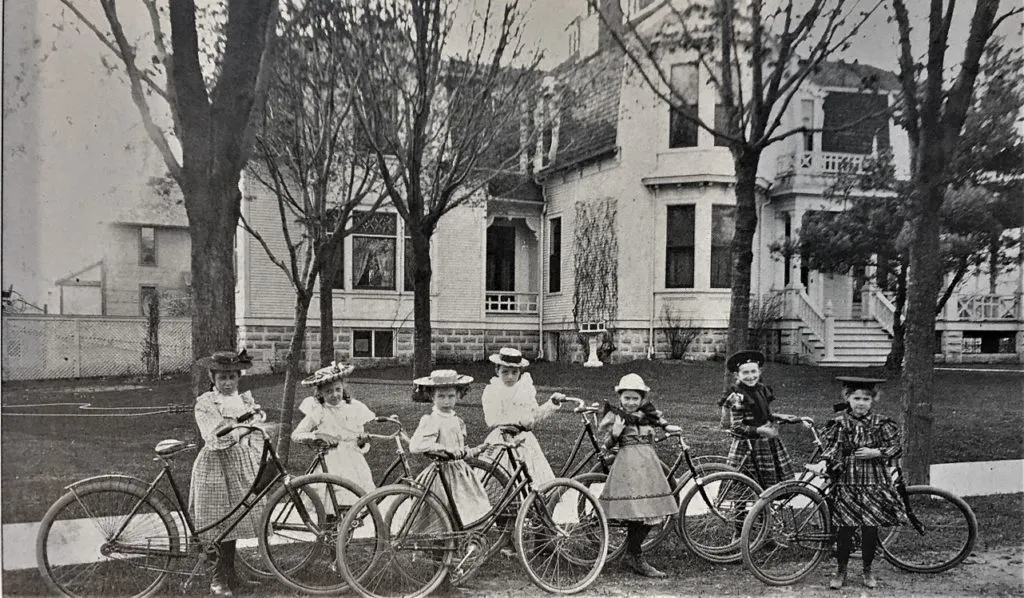
Young girls with their bicycles in front of the Boyden House in the 1890’s.
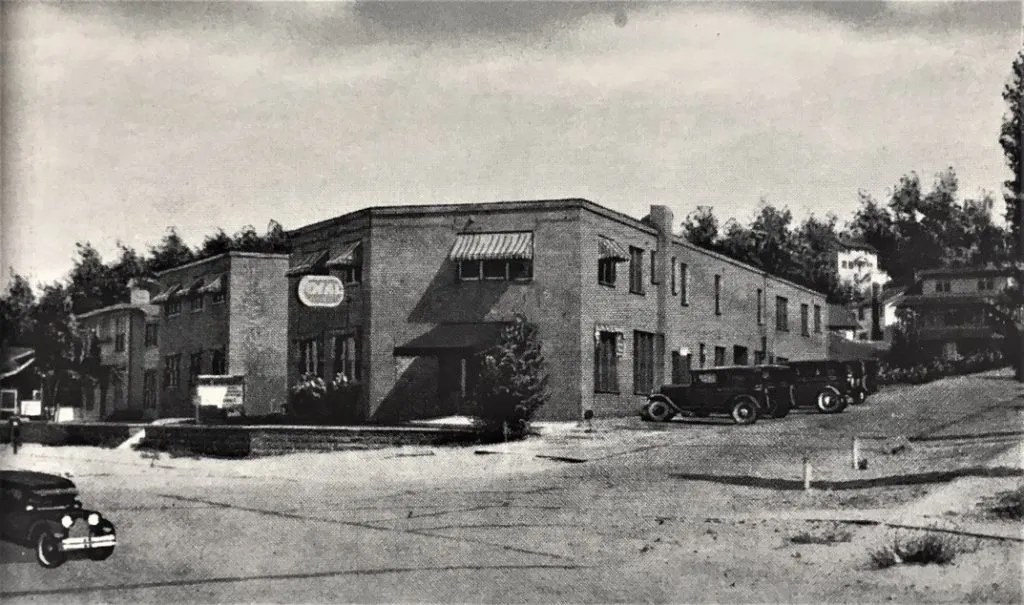
Postcard depicting the Oval Inn circa 1930.
Alternative Usage
Hotels are another set of buildings that faced fires and demolition after closing. However, a few remaining survivors were remodeled to serve a different function. One such structure is the Kirby House that was originally a hotel and restaurant by the same name, although it had many name changes since its construction in 1873. Some of these include the Gildner Hotel in 1895, the Ferry Hotel in 1931, and the Schuler Hotel in 1947. After the owner, Win Schuler had the third floor removed in 1965, he had the entire building converted into a restaurant. From the 1970’s to the 1980’s the place changed names every few years starting with the Grate Steak in 1972 and ending with the Kirby House in 1994.
Tip-A-Few Tavern is another location that transformed from lodging to eatery. It originated as a hotel by the name of Andres House, built in 1874. It housed mainly sailors and could accommodate up to 50 guests. In 1922, part of the building was leveled to make way for a gas station, which later became the site of the now closed Wessels Automobile and Tire. The rest of the original building was converted into Tip-A-Few Tavern in 1956.

The Gildner, originally and currently named Kirby House, served as a hotel and restaurant.

The Andres Hotel, built in 1874, is now Tip-A-Few Tavern.
Recreational Attractions
The Grand Haven Area has many attractions beyond the beaches that have drawn visitors in since settlers arrived, though they have evolved over time.
Magnetic Mineral Springs
In 1870 Alexander Winchell, a professor from University of Michigan, suspected that there were salt deposits underneath Michigan that he could mine and sell. So along with several partners, he founded the Spring Lake Salt Company and began drilling. Instead of salt they found magnetic mineral springs and changed their company to Spring Lake Mineral Springs Company.
Using water for medicinal purposes, or hydrotherapy, was a popular trend in the United States from the 1840’s to the early 1900’s. Many spas opened up using mineral water found nearby. Winchell’s company opened the Spring Lake House in 1871. In addition to the spa, the Spring Lake House had 74 rooms, beautiful gardens, bowling, and billiards.
William Sheldon took notice of the nearby mineral springs and decided to mine in Grand Haven. He drilled in 1871 and found a large source of water that was full of minerals and heavily magnetized. On top of it, he built a large health facility that advertised the healing affects of the water. It offered the guests a variety of baths and showers, as well as croquet, archery, and lawn bowling. You can find more history of the ‘healing properties’ of mineral springs in Michigan here: https://www.mibluemag.com/features/taking-the-waters/.
The Musical Fountain
The Grand Haven Musical Fountain had its first practice show on November 9, 1962, and began putting on regular shows in May 1963. It was the idea of Dr. William Creason who was inspired by a water show he saw while serving overseas. He chose Dewey Hill as the location to make use of the waterfront, and once he had access to the land, construction began.
Thanks to donations, both private and public, the musical fountain was constructed and was the largest in the world until the Bellagio Casino fountain in Las Vegas was built in 1998. They installed the first computer software in 1983, and in the last decade it has received many updates such as new lights, audio systems, and new water features: the Helix and the Wave.
It originally began with a musical number taken from the 1895 opera Thus Spoke Zarathustra by Richard Strauss. This song was made popular in 1968 when 2001: Space Odyssey was released. The program then traditionally ended with an instrumental version of “I Could Have Danced All Night” from the Broadway musical My Fair Lady (1956). In recent years, the songs change for each performance from a variety of genres.

Sheldon’s Magnetic Mineral Springs advertised the healing effects of mineral water.
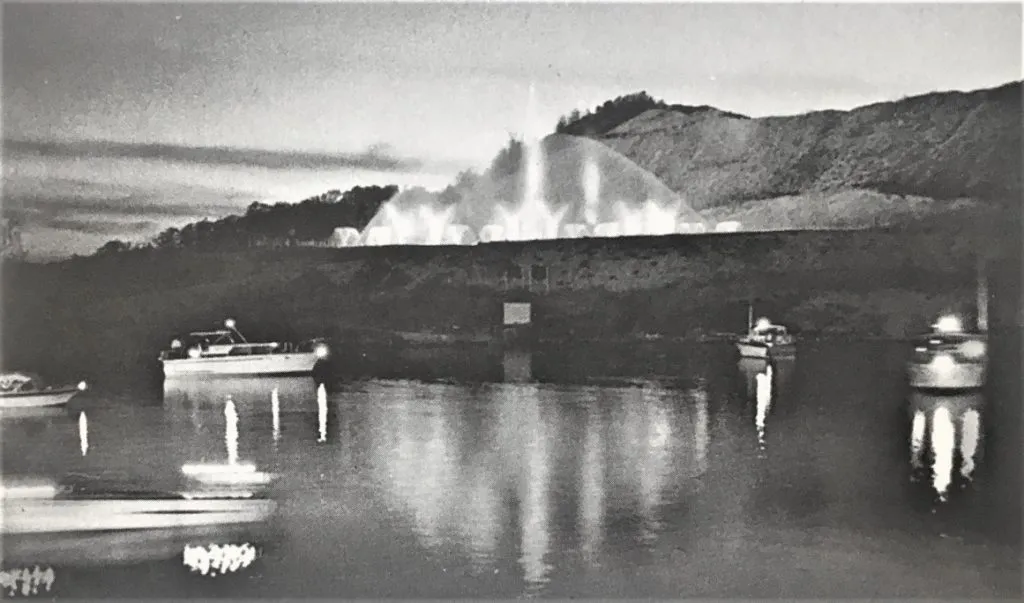
The Musical Fountain, built in 1962, displays synchronized water, music, and colored lights during the summer nights.
Credits
Information provided by Images of America: The Grand Haven Area 1860 – 1960 by Wallace K. Ewing, Ph.D., and David H. Seibold, D.D.S., for the Tri-Cities Historical Museum, Destination: The Haven by Wallace K. Ewing, Ph.D., and Postcard History Series: The Grand Haven Area 1905 – 1975 – In Vintage Postcards by Wallace K. Ewing, Ph.D., and David H. Seibold, D.D.S., for the Tri-Cities Historical Museum, the Northwest Ottawa County Encyclopedia of History – Volume II: Buildings and Sites, Businesses and Industries, Topics, and Bibliography by Wallace K. Ewing, Ph.D., and by Then & Now: Grand Haven by Wallace K. Ewing, Ph.D., and Elizabeth Dobbie, for the Tri-Cities Historical Museum.
Images provided by Images of America: The Grand Haven Area 1860 – 1960 as well as Postcard History Series: The Grand Haven Area 1905 – 1975 – In Vintage Postcards. Both works are by Wallace K. Ewing, Ph.D., and David H. Seibold, D.D.S., for the Tri-Cities Historical Museum.




